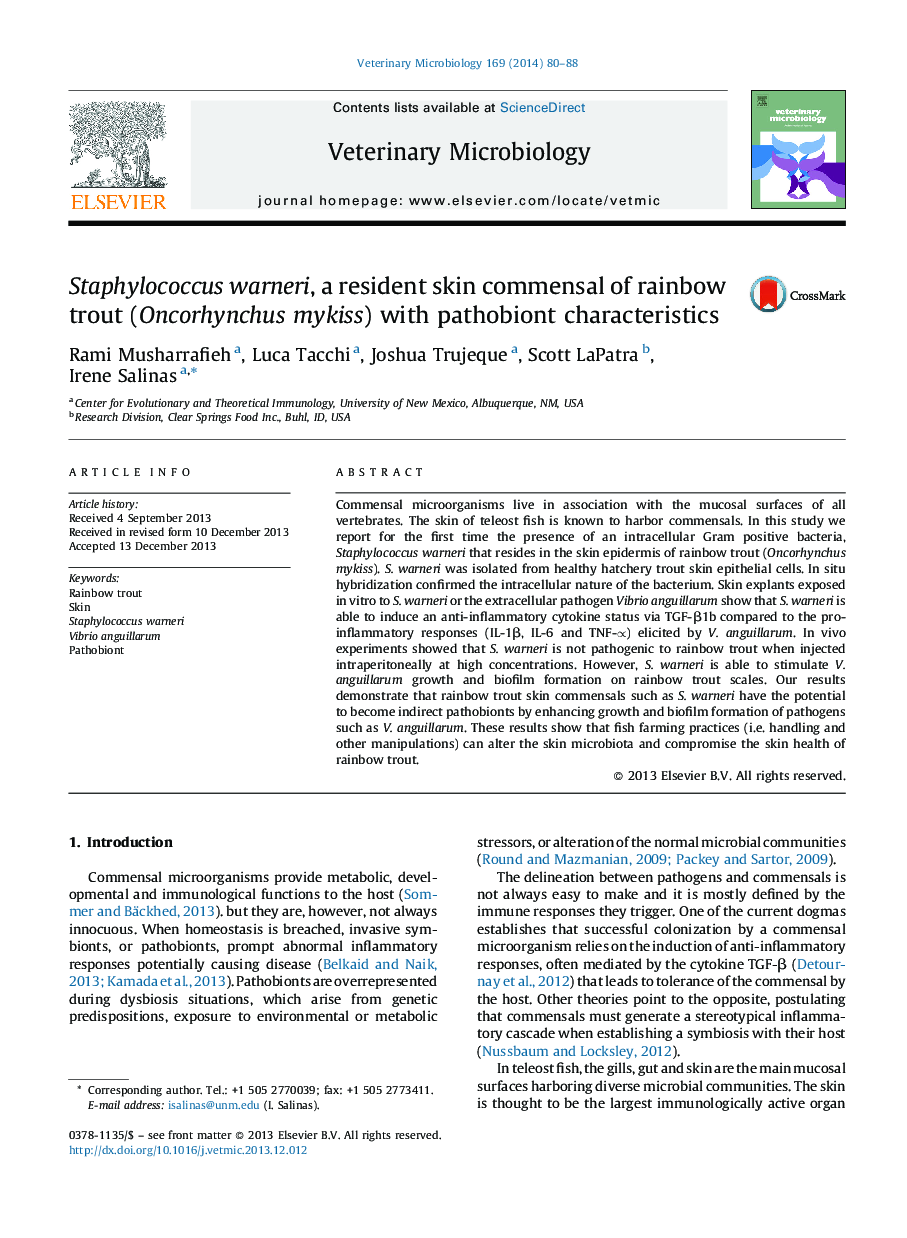| Article ID | Journal | Published Year | Pages | File Type |
|---|---|---|---|---|
| 2466629 | Veterinary Microbiology | 2014 | 9 Pages |
Commensal microorganisms live in association with the mucosal surfaces of all vertebrates. The skin of teleost fish is known to harbor commensals. In this study we report for the first time the presence of an intracellular Gram positive bacteria, Staphylococcus warneri that resides in the skin epidermis of rainbow trout (Oncorhynchus mykiss). S. warneri was isolated from healthy hatchery trout skin epithelial cells. In situ hybridization confirmed the intracellular nature of the bacterium. Skin explants exposed in vitro to S. warneri or the extracellular pathogen Vibrio anguillarum show that S. warneri is able to induce an anti-inflammatory cytokine status via TGF-β1b compared to the pro-inflammatory responses (IL-1β, IL-6 and TNF-∝) elicited by V. anguillarum. In vivo experiments showed that S. warneri is not pathogenic to rainbow trout when injected intraperitoneally at high concentrations. However, S. warneri is able to stimulate V. anguillarum growth and biofilm formation on rainbow trout scales. Our results demonstrate that rainbow trout skin commensals such as S. warneri have the potential to become indirect pathobionts by enhancing growth and biofilm formation of pathogens such as V. anguillarum. These results show that fish farming practices (i.e. handling and other manipulations) can alter the skin microbiota and compromise the skin health of rainbow trout.
